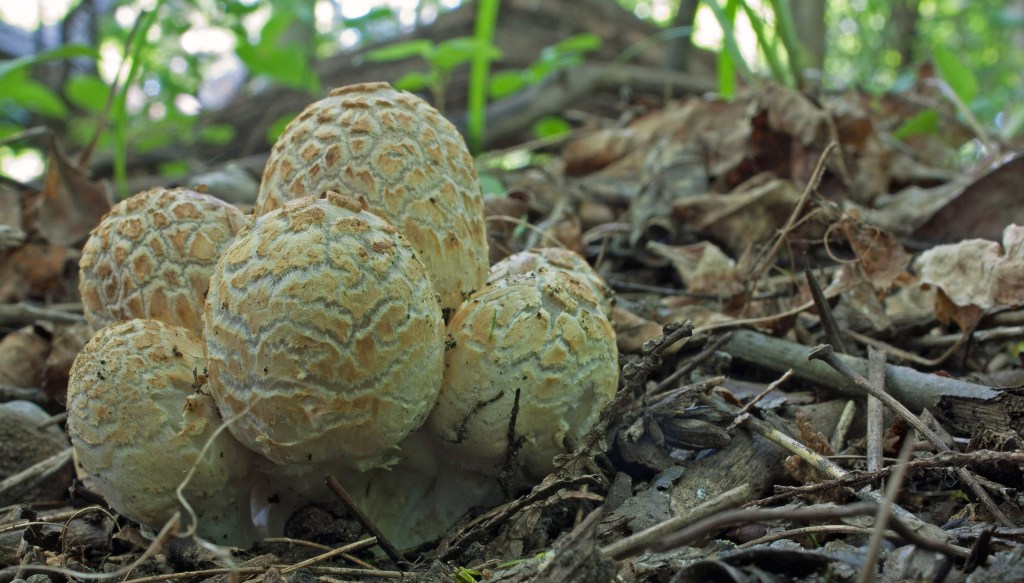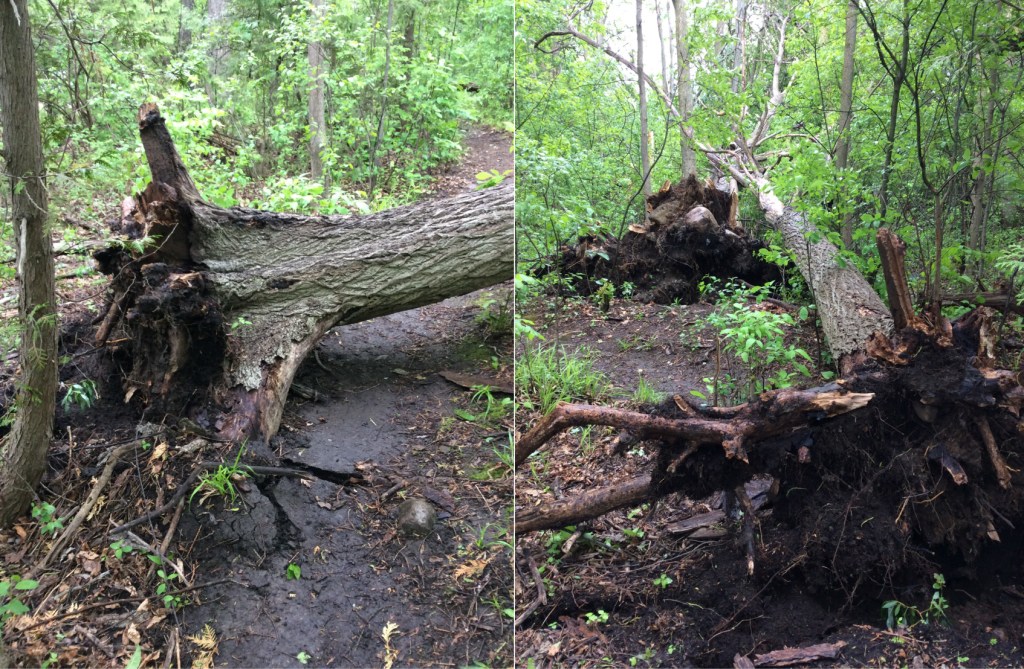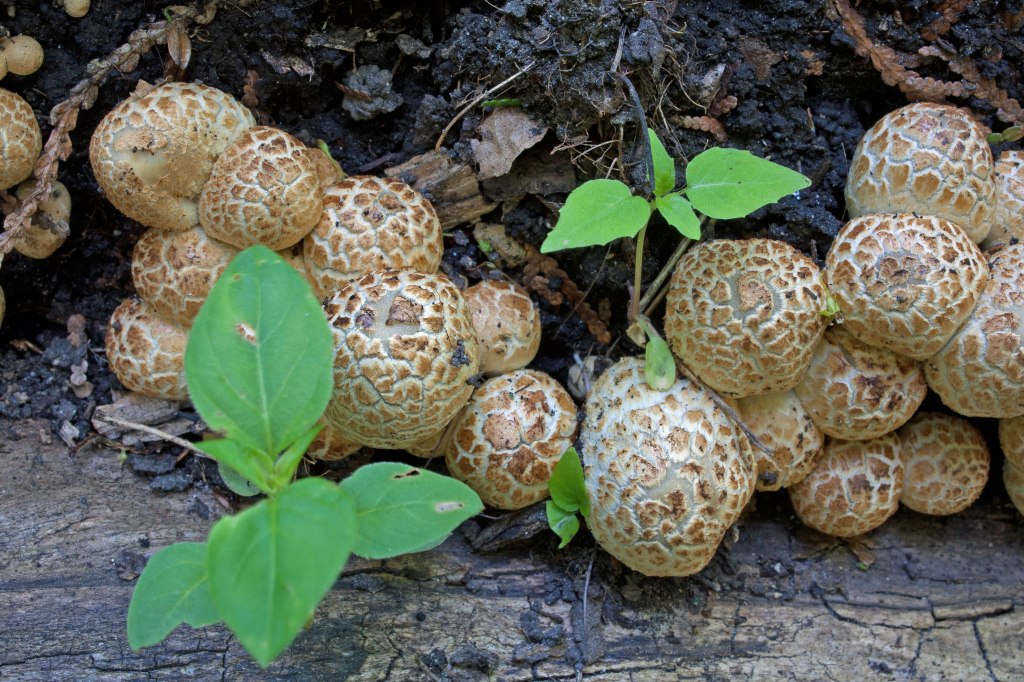The Derecho
On the 21st of May, 2022, a major windstorm and thunderstorm roared through Peterborough and much of southern-eastern Ontario and Quebec, uprooting trees and knocking out power for days. Environment Canada Senior Climatologist David Phillips shared that the storm spanned about 1,000 kilometers from Michigan to Maine as it swept across Ontario and Quebec.
According to Environment Canada, a derecho is a long line of very active and violent thunderstorms or microbursts that include winds of at least 93 km/h with focused gusts of 121 km/h or greater. Derechos typically contain numerous downburst clusters (families of downburst clusters) that, in turn, have smaller downbursts, and smaller microbursts. These tight, often cyclic tornado-like bursts within larger linear downbursts are what likely created the random devastation seen in Peterborough, where a tree could be entirely uprooted and the tree right beside it left untouched.
A true ‘herald archetype’, environmental disasters incite change, often through disorder. The riparian forest along the Otonabee River that I daily walk was affected by the storm in many different ways. The windward deeply furrowed bark of several black locust trees looked as though someone had carelessly drawn a rasp against them. Other trees had their roots twisted and raised up out of the ground as the tree was literally pulled out of the ground by the fierce wind. Others were simply uprooted and toppled completely, sometimes creating a domino-effect of topping trees.
One incident of toppled uprooted trees occurred near my house, involving two black walnut trees and a silver maple. The first to create the domino effect was an old black walnut snag that had toppled over the forest path before knocking over another tree.
The Mushroom
On June 5th, two weeks after the storm, on the base and surrounding ground of the uprooted old black walnut tree, I discovered many clusters of ink caps (which I identified as Coprinellus domesticus, which could also be C. radians). When I first saw the mushrooms, they were just starting and my first thought was, “these are puffballs!” But close inspection revealed that they were just young ink caps heavily veiled.
But, why were they here? The tree had in fact crossed the path in its fall, leaving a litter of bark, branches and a large root ball; hikers now needed to walk around its shallow root ball to go further. In my daily walks over the years I had never seen these mushrooms at the base of this tree or nearby, where they currently were. Why now? And why here? Did the disturbance play a role? I know of several instances where a disturbance can trigger active reproduction and/or spread of offspring. I find a familiar logic to that scheme. For instance, working with white spruce, Ascoli et al. reported in the Journal of Ecology that “disturbances often promote environmental conditions that favor seed germination, seedling emergence and establishment, including exposed soil, increased light at the forest floor, and low competition by concurring vegetation.” The researchers added that “several disturbance-adapted species have evolved strategies to reproduce soon after severe disturbance in order to obtain a competitive advantage—for example, resprouting or serotiny [trigger-based delayed release of seeds] in fire-prone ecosystems subject to crown-fire regimes.” Catastrophic windstorms would certainly constitute a natural disturbance worthy of natural reaction. A little like John Smith deciding to get insurance on his vehicle following a near-accident.
Ecology of Coprinellus domesticus
According to Fungus Fact Friday, Coprinellus domesticus is, like most ink caps, an umbrella-shaped agaric with gills that deliquesce or autodigest as the mushroom ages. In their article Dish of Deliquescence, Cornell University shares that “The mushrooms appear in wet conditions, but then the same moisture that brought life to the new tissue facilitates death: the inky caps digest themselves via hydrolytic enzymes, tiny biologic machines that use water to break down molecules. The slopfest takes just a few hours, from pileus to puddle.” Cornell rather pithily adds, “It’s a selective-death process that get useless tissue out of the way of the babies, letting them escape to as far from the parent as possible before they begin their new lives (it’s a little like college). As an inky cap deliquesces, the tightly packed gills separate and curl back, allowing some spores to float out into the air.”
Cornell writes that, “About two hours before spore-release, chitinase is made, but only in the mushroom cap and gills, never in the mycelia or stem.” In an article entitled Urban Deliquescence, Forest Floor Narrative tells us that after the deliquescent ink caps release their spores, “enzymes called chitinases are released from the vacuoles of senescing gills. These enzymes structurally degrade their caps, as their stipe remains upright, only to support a dripping mess.” On the process of deliquescence, Cornell adds, “Deliquescence is a chain reaction, starting with the end of the gills closest to the mushroom stem. Spores are released from here first, and then autodiestion of gill cells there takes place, releasing a liquid that is a potent digestive. The liquid is taken up by the neighboring cells, which are turned into more liquid, and the wave of destruction travels along the gills just behind the region of maturing spores. Thus the mushroom is digested from the center to its fringe.”

Also called Firerug inkcap, C. domesticus is a saprobic fungus, growing gregariously and in small clusters on decaying hardwood logs. Its ‘evil clone’ Coprinellus radians grows in identical habitat and looks identical to C. domesticus—so much so, that some consider them one in the same. Mycologists differentiate them by spore size alone.

Endophytic Fungi & Tree as Ecosystem
C. domesticus is also an endophytic fungus: a fungus that inhabits plant tissues without destroying or producing substances that cause an infection to the host cell. Endophytic fungi inhabit numerous types of organisms from mosses and algae to ferns, hardwoods and conifer trees and are estimated to be above a million types. They are universally present in every plant species. Rashmi, Kushveer and Sarma in Mycosphere report that “a single tropical leaf may harbor 90 endophytic species.” The relationship of the endophytic fungus with its host tree works on a continuum, potentially switching from mutualism to antagonism depending on environmental pressures; the endophyte, for instance, may become saprobic once the host starts senescence.
Endophytic fungi provide several benefits to plants, including protection from plant pathogens and have been implicated in the production of antibiotic and other compounds of therapeutic importance. Endophytic fungi are often a rich source of functional secondary metabolites that include flavonoids, terpenoids, quinines, amines, alkaloids, chlorinated metabolites and aliphatic compounds. Rivera-Orduna et al. in Academia reported Coprinellus domesticus as the dominant fungus living in the roots, branches, bark and leaves of the Mexican yew. They reported C. domesticus in other plants as well. Aghayeva et al. found C. domesticus as endophyte in the bark of the chestnut.
Salazar et al. reported in Lankesteriana that Coprinellus radians was found in roots of certain plants and shown to promote germination of the plant’s seeds. Vieia et al. in the Canadian Journal of Microbiology also reported that C. radians was one of over 200 filamentous endophytic fungi associated with the Brazilian medicinal plant Solanum cernuum and capable of antimicrobial activities. Some endophytic fungi produce similar chemical compounds as its host; others produce novel natural products. For instance, the anticancer drug taxol was found produced by endophytic fungi isolated from Taxus brevifolia, among others. Endophytic fungi can also increase tolerance of its host plant to environmental stresses. For instance, they can increase drought and disease resistance of the host plant and decrease herbivory and certain pathogens.

What I Saw…
Two weeks after the storm over the span of three days, I observed how this mushroom colony first appeared and evolved from solid balls to inky mush. The caps began as closed ovals of a warm honey yellow colour, enclosed by a universal veil in varying stages of fragmentation. They resembled puffballs.

The next day, they opened up, some in the shape of a rolled-up umbrella, others with caps (pileus) expanded to a convex or conical shape. Still honey-yellow to brown but paler at the edges, the expanded caps now had ‘warts’ on their surface, whitish to brown left overs of the universal veil that could easily brush off. Some mushrooms had started to go gray with a brownish centre. The caps were finely grooved beneath the whitish to brownish fragments of their universal veils. The gills looked white when the mushrooms first opened up but soon turned grey. On the third day they would turn blackish and deliquesce into black “ink.” Their radial furrows or striations became more apparent.
It rained much of the night. On the third day, when I visited the mushrooms between downpours, they had completely opened up into the typical ink cap convex shape. They had gone gray with black ink-dripping edges and the veil fragments had washed away; the caps looked sleek with more prominent grooves. Several had totally liquified (deliquesced) and collapsed. On touching one, my hand was covered in ink. The timing, I thought, was impeccable. Instead of releasing spores into the wind for easy dispersal, ink caps produce an enzyme that eats their bodies. The inky slime gets washed away in the next rain, along with a bazillion zygotes. Essentially, they digest themselves to reproduce.
I did not observe any presence of an ozonium, the hairy carpet of bright orange this mushroom typically lays down on dead logs in the forest. Fungus Fact Friday tells us that “the ozonium is composed of sterile fungal hyphae and is really just an external mycelium. This structure is often more noticeable than the mushrooms thanks to its bright color. Mycologists don’t know why the fungus grows such an unusual structure; it doesn’t seem to serve any particular purpose.” Mushroom Expert does, however, note that Coprinellus domesticus and Coprinellus radians (which both lay out an ozonium) don’t always do this.
Perhaps it doesn’t matter; suffice to say that the genus Coprinellus, the ink cap, is fast and efficient. The fruiting bodies burst out of the ground or rotting tree following a moist rain, formed great colonies of mushrooms that matured as though they knew when it would be perfect for the dispersion of their spores and just when the big rains came they did what they needed to do—their caps liquified in a process called deliquescence and spread their inky substrate full of spores in the rains—then collapsed back into obscurity. All within three days. Did the Coprinellus fungi escape the black walnut when the storm toppled it? I saw large strips of bark scattered on the ground at the base of the tree and that is where I saw a concentration of Coprinellus (beneath the bark strips on the ground and on the bark of the tree base); bark is one of the tissue types known to harbor Coprinellus. Was the fruiting stage induced by light? The toppled trees certainly opened up the canopy. Many basidiomycetes need certain conditions of light to complete their life cycle; for instance, Coprinellus domesticus requires blue light, at an intensity of 1.5-3 x 104 erg/cm2 sec-1 and 7-9 days of light to produce the mature basidiocarp. Light is known to induce fruiting and asexual sporulation of the dikaryon stage of other endophytic fungi.
In a sudden moment of clarity, I saw how fungi interconnect all things on this planet, living in, on, above and below everything. First helping it fully live, then helping it efficiently die. Fungi literally stitch a living tapestry of balanced tension between symbiosis and antagonism, all orchestrated by the environment and climate–and completing a cycle that has marched on for millennia. With that realization, I felt very small, but connected and part of something huge and truly awesome.
When you tug on a single thing in nature, you find it attached to the entire universe
John Muir
p.s. The following year (late June of 2023), after several good warm rains, I saw the same mushrooms on the same uprooted tree. This time, I noticed several undergoing the process of ‘guttation’. During periods of rapid growth, when metabolism speeds up, mushrooms may excrete excess water–like sap–and form visible drops on their surface. The guttation may be coloured, as it was in the case I observed, due to the process of osmosis through the saturated soil.



Nina Munteanu is a Canadian ecologist / limnologist and novelist. She is co-editor of Europa SF and currently teaches writing courses at George Brown College and the University of Toronto. Visit www.ninamunteanu.ca for the latest on her books. Nina’s bilingual “La natura dell’acqua / The Way of Water” was published by Mincione Edizioni in Rome. Her non-fiction book “Water Is…” by Pixl Press(Vancouver) was selected by Margaret Atwood in the New York Times ‘Year in Reading’ and was chosen as the 2017 Summer Read by Water Canada. Her novel “A Diary in the Age of Water” was released by Inanna Publications (Toronto) in June 2020.














2 thoughts on “Derecho and the Mushroom”